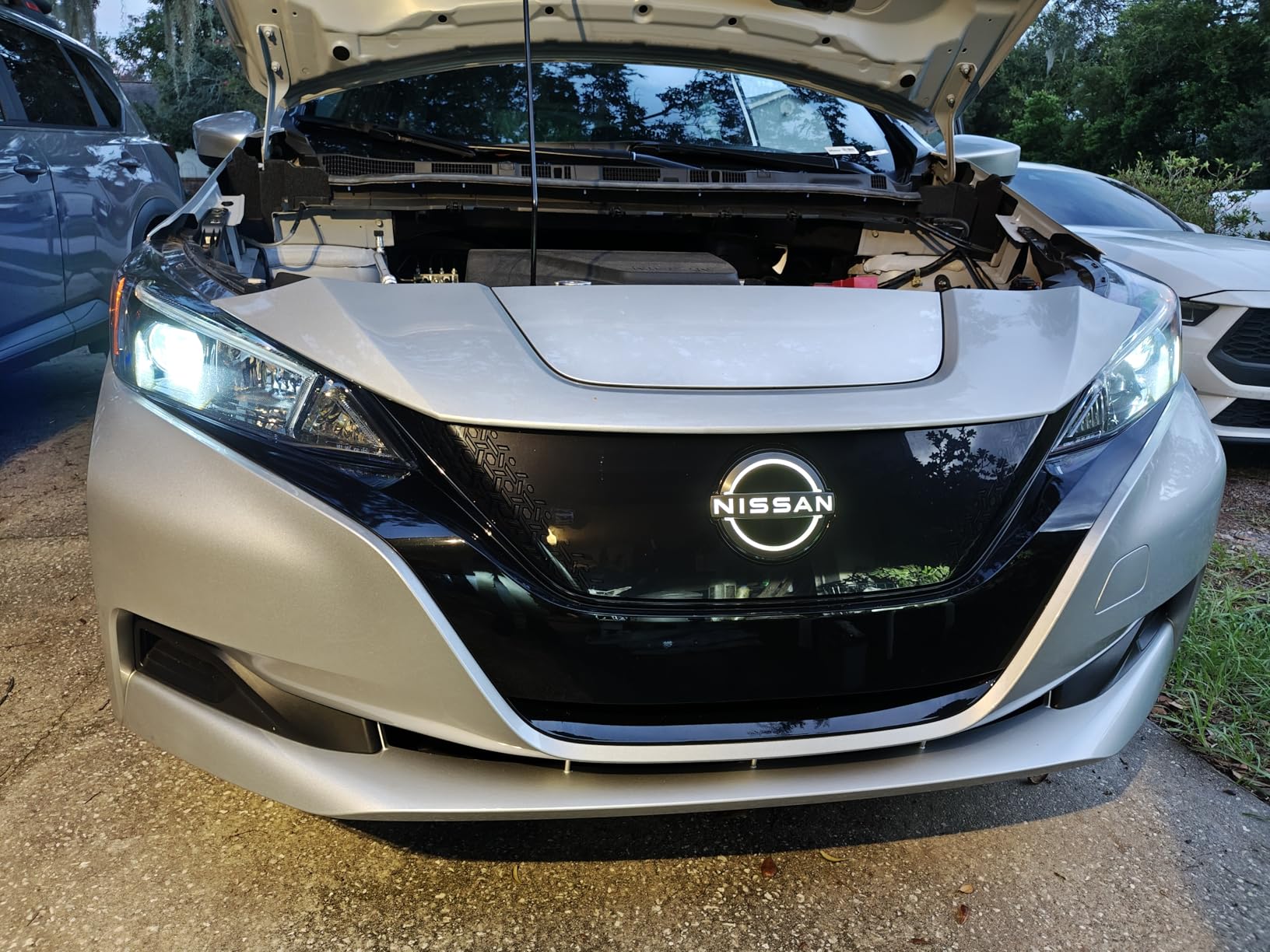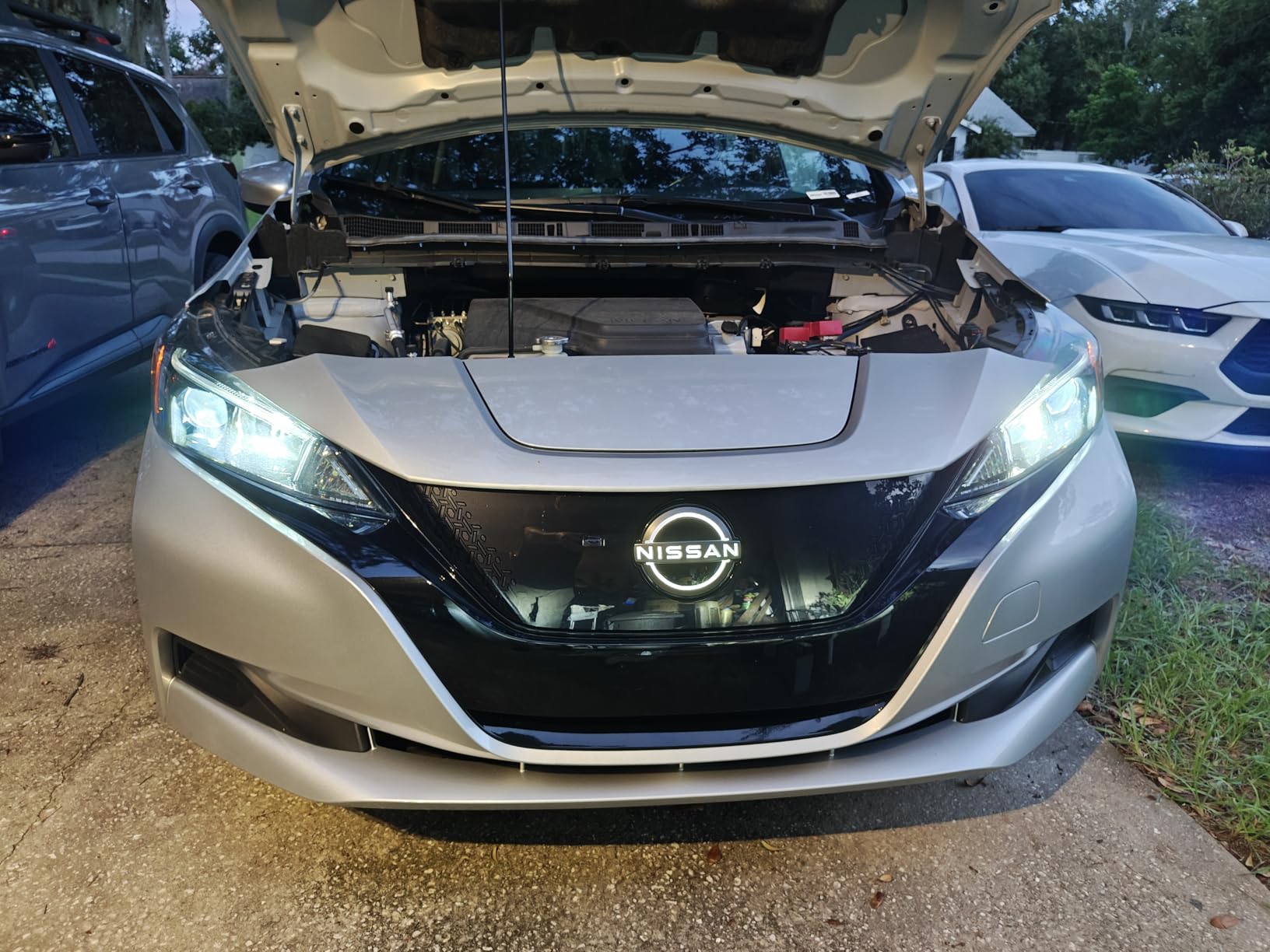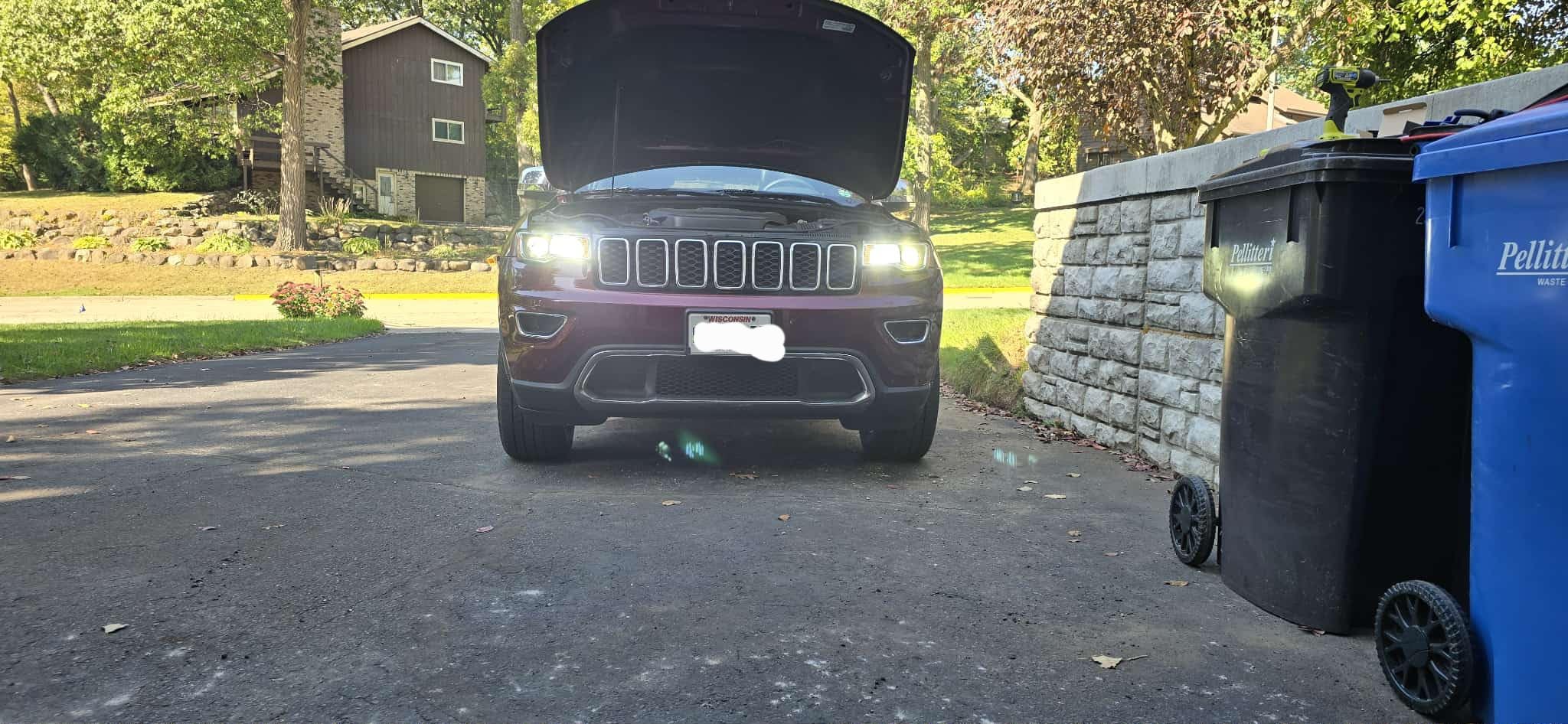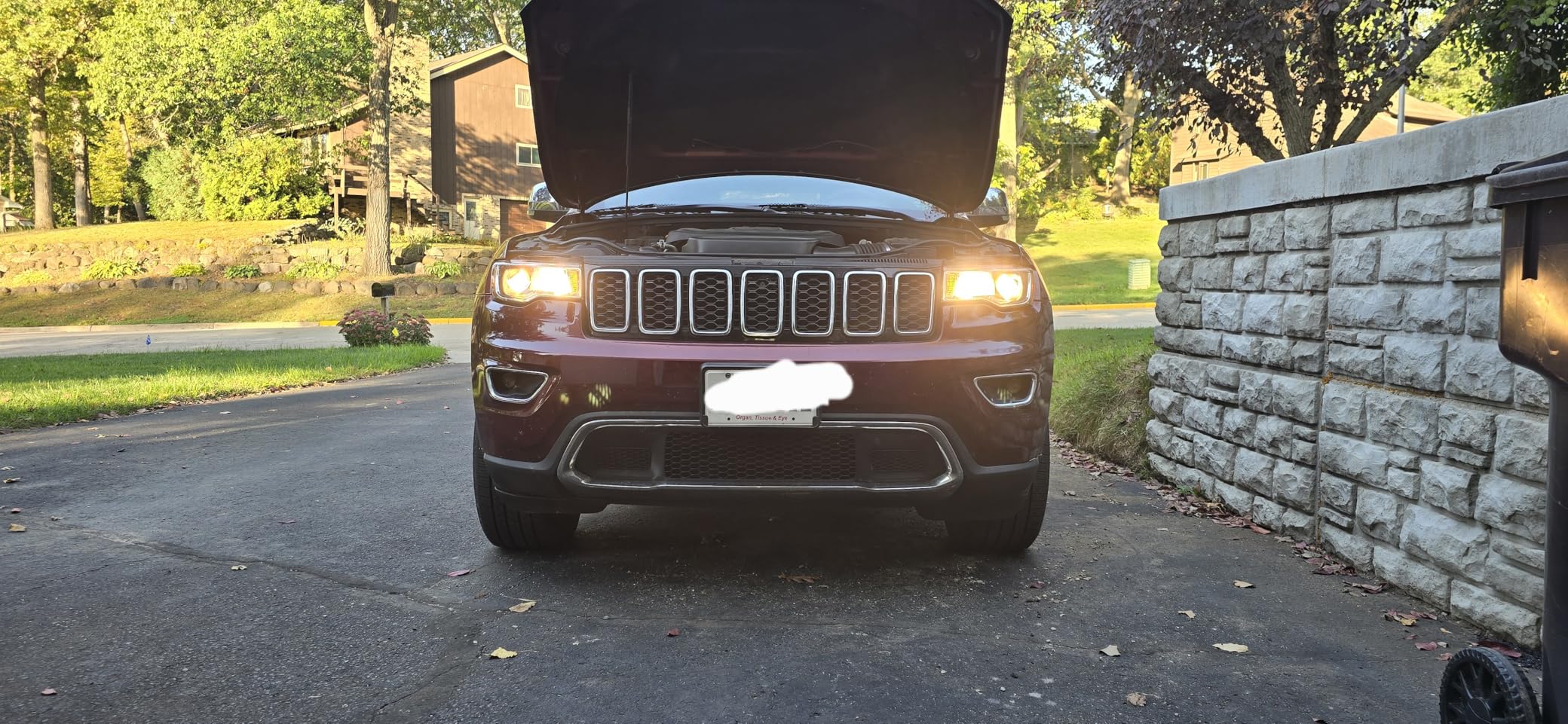Many Toyota owners are switching to LED headlights as they offer dramatic benefits like using half the energy of conventional halogen bulbs while being twice as bright. Not only do they have a much longer lifespan-a maximum of 50,000 hours-but they also work at their best in all kinds of driving conditions without causing issues like blind spots. LEDs now come with intelligent features that are harmoniously integrated into your car's system, reducing dashboard errors and ensuring optimum performance. Whether you're looking to upgrade your headlights or want functional solutions for various conditions, being aware of these features can make all the difference.
Why Are Toyota Owners Upgrading to LED Headlights?
Toyota drivers are more and more turning to LED headlights, and it is easy to understand why. The new lights have a whole range of benefits that collectively add up to a better driving experience and improved efficiency of the vehicle.
LED Headlights Improve Visibility
Toyota buyers are also going for LED headlights due to the enhanced visibility provided by them. LEDs emit a brighter and more focused beam than the halogen bulb, and they work very well in driving at night or under weather conditions such as rain or fog. The additional light allows the driver to see beyond billboards and obstructions easily, thereby making the way for safe driving.
LEDs Use Less Energy
Another major benefit of LED headlights is that they conserve energy. LEDs consume significantly less power than halogen bulbs, putting less strain on your car's electrical system and potentially even enhancing mileage. For environmentally conscious and fuel-efficient drivers, their lower energy consumption is a huge selling point.
LEDs Last Longer and Save Money
LED headlights are cost-effective in the long term since they are extremely durable. They may be costly initially, but whereas LEDs last for 50,000 hours, halogen bulbs last only for a paltry 1,000 hours on average. With fewer replacement needs, LED will be more affordable in terms of maintenance. LED would therefore be a smart decision by Toyota users who desire performance with durability in the long term.

LED Headlights vs Halogen Lights: 3 Key Differences Explained
LED headlights and halogen lights differ significantly from one another in a number of advantages that make LEDs a good choice for the majority of motorists. Understanding their differences will enable you to make an informed decision about what kind of headlight will be most suitable for your vehicle. The three general areas where LED headlights surpass halogen bulbs are in their working principles, power consumption, and lifespan.
| Feature | LED Headlights | Halogen Lights |
| Working Principle | Semiconductor-based; produces light via electron movement resulting in focused beam | Tungsten filament glows when heated by electricity producing broader light |
| Energy Consumption | Approximately 12V/5W | Approximately 12V/55W |
| Lifespan | Up to 50,000 hours | Around 1,000 hours |
LEDs illuminate brighter and with less energy, providing you with more miles per gallon while doing good for the planet. They outlast halogen bulbs by years, cutting out the hassle and expense of constant replacement.
Five Golden Standards for Choosing LED Headlights
Selecting the correct LED headlights for your Toyota entails knowing certain standards that guarantee peak performance and compatibility. Having learned why LEDs are a better choice than halogen lights, it is essential to learn how to pick the best one suited for your vehicle's requirements. The following are five key considerations:
1. Choose the Right Lumen Value
Use the formula: Car Weight (kg) × Maximum Speed (km/h) × 0.2 = Recommended Lumens
This formulated calculation will ensure your headlights are sufficiently bright based on your car's weight and average speed. For example, a 1,500kg Toyota traveling at 120km/h would need approximately 36,000 lumens for optimal visibility and safety.
2. Select the Best Color Temperature
The ideal color temperature for LED headlight bulbs is 5000K-6500K, a white color that closely resembles daylight. Although some others complain that 5700K leads to visibility issues with inclement weather, unbiased testing finds that this temperature actually offers excellent contrast and visibility in rain and fog without causing glare issues associated with higher temperatures (7000K+).
3. Verify Vehicle Compatibility
Verify LED headlight compatibility with your Toyota model, year, and trim level before making a purchase. Most reputable brands have online databases or fitment tools. This avoids housing size fitment problems, connector type, and electrical requirements that lead to poor performance or installation ease.
4. Opt for Efficient Heat Dissipation
Aviation aluminum heat sinks with copper cores are also more effective than plastic cooling systems by dissipating up to 30% more heat. This is necessary as LEDs at temperatures above 85°C lose significant brightness and also have a shorter lifespan. Use products that implement active cooling like inbuilt fans for best results in sealed headlight assemblies.
5. Check CAN-BUS Protocol Compatibility
Toyota cars produced from 2010 onwards tend to have CAN-BUS systems that monitor headlight usage. LED replacement must have load resistors or CAN-BUS adapters integrated to prevent error messages or flicker. The more quality LED kits will be "CAN-BUS Ready" or "Error-Free" and will include the technology to enable seamless communication with your car's computer system.

What Are the Best Ways to Upgrade Your Toyota's Lighting?
When upgrading your Toyota's headlights to LEDs, scenario-based solutions can help tailor the changes to meet specific driving needs and preferences. Here's a guide to effectively upgrade your headlight system and enhance your vehicle's interior lighting.
Headlight System Upgrade Guide
Improving your vehicle's headlight system involves selecting the right components for optimal performance:
Low Beams: H11/L Type with Cut Line Certification
- Proper Beam Pattern: Utilize H11/L bulbs certified under ECE R112 or SAE J2578 to exhibit a sharp cutoff line to prevent glare for oncoming drivers
- Installation Tip: Install the LED chips horizontally rather than vertically to maintain the original beam pattern
- Brightness Range: Look for 8,000-10,000 lumens with 6000K color temperature for maximum visibility with minimal glare
- Compatibility Check: Toyota Camry (2012-2021), RAV4 (2013-2018), and Corolla (2014-2019) typically have H11 low beams
- Cooling Requirements: Offer at least 30% aluminum heatsink coverage with active cooling for sealed headlight housings
High Beams: Focused H9/9005
- Beam Distance: Select high beams with an illumination range of 350-400 meters for highway driving
- Power Consumption: Ideal H9/9005 LEDs should use 25-35W and produce 10,000-12,000 lumens
- Installation Angle: Install in perfectly 0° horizontal alignment for maximum forward projection
- Weather Performance: Choose IP67 or a higher waterproof rating for uniform all-weather performance
- Lifespan Indicators: Ideal LEDs should mark a 30,000+ hour lifespan with less than 15% brightness attenuation
Interior Ambient Light Modification
Enhancing the ambient lighting inside your Toyota can dramatically improve the overall driving experience. Consider adjusting the interior lights for both aesthetic appeal and functional benefits:
Customizable Colors and Intensities
- App Control: Opt for systems with smartphone connectivity for color/brightness adjustments in real-time
- Music Synchronization: Premium kits come with sound-activated lighting, which pulses according to your sound system
- Installation Spots: Accent footwells, door panels, and under-dash areas for subtle upgrades without distracting glare
- Wiring Style: Use vehicle-specific plug-and-play harnesses that tap into existing door trigger wires to avoid warranty issues
- Brightness Levels: Look for systems with at least 8 levels of brightness and automatic dimming when headlights are activated
Energy Efficiency and Integration
- Power Consumption: Quality interior LED kits should have less than 0.5A total to prevent battery drain
- OEM Integration: On 2018+ Toyotas, use lighting kits that connect to the existing ambient lighting control module
- Heat Management: Utilize LEDs with less than 45°C operating temperature to prevent damage to the dashboard or trim
- Voltage Protection: Equip systems with 9-16V operating range and surge protection
- Installation Accessibility: Incorporate strip lights with 3M auto-grade adhesive and wire management clips available for convenient, professional finishes
What Are the Rules for Toyota Lighting Upgrades?
Upgrading your Toyota's lighting system involves more than just technical specifications; it's also important to be aware of legal considerations and regulations. Ensuring your vehicle complies with local laws helps avoid potential fines and enhances road safety. Here are key points to consider:
Check Your Region's Headlight Laws
Different regions have their own standards for aftermarket lights. In the US, headlights must comply with Federal Motor Vehicle Safety Standard (FMVSS) 108, which prescribes:
- Max high beam intensity: 75,000 candela
- Low beam asymmetrical pattern to minimize glare
- Permitted color range: white to selective yellow only (3000K-6500K)
- Requires DOT or SAE marking on approved products
European specifications (ECE R112) are slightly more stringent, with tighter beam patterns. Recheck your state or domicile laws, as a few (California, for one) have additional restrictions on aftermarket designs.
Align Your Headlights Properly
Incorrect headlight aim is the #1 cause of lighting tickets. Most jurisdictions require:
- Low beam height: Main beam 22-36 inches above ground at 25 feet
- Horizontal alignment: 0-2% downward tilt (2-4 inches drop at 25 feet)
- Proper aim testing: Use level surface and wall marking technique or professional alignment
- Documentation: Keep adjustment records and product compliance certificates
Most auto parts stores offer free headlight aim checks, and proper alignment must be checked annually or after suspension modifications.
Make Sure Your Vehicle Supports New Lights
When updating the newer Toyota vehicles, you need to pay attention to their electronic systems. Any Toyota 2012 and later needs to have CAN-BUS compatible LED lights, or your dashboard will light up with error messages. For 2010-2016 models, you'll need to have 50W 6Ω load resistors installed with your LED conversion to prevent problems. If you have a 2017 or newer Toyota, make sure you buy PWM-friendly LEDs to avoid annoying flickering. Don't worry if you see error codes like B1650 or C1300 when you install them – they're normal and can usually be fixed with the right adapters.
Follow Rules for Interior Car Lights
The law is quite strict about interior lighting modifications in your Toyota. Never install red or blue lights that are visible from the outside – these are illegal in all 50 states since they might be confused with emergency vehicles. Ensure your dashboard lights are not too bright or they'll impair your night vision. There are also regulations on how bright your interior maybe while driving during nighttime. Avoid flashy or strobing footwell lights that might distract you or other drivers. Always employ SAE J1128 fire safety standard wiring – never utilize common household wiring, which is not suitable for automobiles.
Keep Lighting Documents Handy
Keep all the certification documents showing your lights meet DOT, SAE, or ECE standards. If you've paid for professional installation, keep those receipts too. Certain inspectors will make you prove you can return your lighting to stock condition if need be. Be aware that some states check the light output and aim during yearly safety inspections.

How to Fix Common Lighting Issues in Your Toyota
Even the best Toyota lighting upgrade may encounter a couple of setbacks. Here's how to troubleshoot the most frequent issues:
- Flickering LED Lights: If your new LEDs are flickering, there's a good chance you have a compatibility issue. Check to make sure your connections are secure and that you're using the right type of LEDs for your Toyota's electrical system. Some vehicles need special adapters to work properly with LEDs.
- Dim Light Output: Inadequate brightness generally means there's a power problem. Make sure all the connections are clean and tight. Sometimes the issue is simply a loose ground wire or corroded connector that's cutting back on power to your lights.
- Misaligned Headlights: If you're blinding other drivers with your high beams, chances are your headlights are out of alignment. Pull onto level ground in front of a wall, and adjust the screws on your headlight assembly to get the beams properly aligned - you shouldn't be blinding oncoming traffic.
- Dashboard Warning Lights: Annoying error messages appear when your Toyota computer thinks a bulb has burned out. Installing a CAN-BUS adapter or load resistor will make the system think everything is okay and get rid of those alerts.
- Moisture Problems: Water inside your headlight assembly will fog up your lights and eventually destroy them. Check the seals around your headlight unit and replace cracked or broken seals. Use small packets of silica gel to absorb moisture.
Better Lights for Your Toyota
LED upgrading makes all the difference in night driving. The road is so much clearer, and you can spot hazards like animals or potholes in time to take action.
This simple change costs $30-80 and actually saves you money over time since LEDs use less energy and almost never need replacement. Simply make sure to buy the right type for your Toyota model (newer vehicles need CANbus-compatible LEDs) and take a few minutes to adjust them after installation.
Your first night drive with your new lights will have you wondering why you waited so long. The difference is dramatic and immediate – every night drive is made less stressful and safer.
Read More
- Why LED Headlights Are the Ultimate Upgrade for Halogen Headlight Replacement – RIMTHIN
- Car Headlights Acting Up? Common Headlamp Problems and How to Fix Them – RIMTHIN
- LED Headlights: The Ultimate Guide To Brighter Night Driving – RIMTHIN
- How to Connect Fog Lights on a 2013 Chevy Malibu Without Hassle – RIMTHIN
- LED Headlights For Jeep Wrangler: Transform Your Night Driving Now – RIMTHIN




